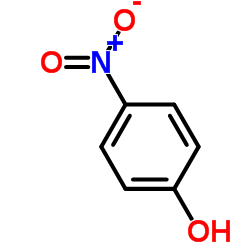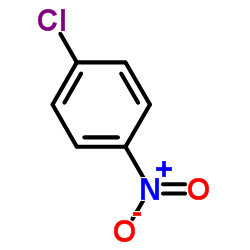Celiprolol HCl

Celiprolol HCl structure
|
Common Name | Celiprolol HCl | ||
|---|---|---|---|---|
| CAS Number | 57470-78-7 | Molecular Weight | 415.955 | |
| Density | 1.114g/cm3 | Boiling Point | 586.5ºC at 760 mmHg | |
| Molecular Formula | C20H34ClN3O4 | Melting Point | 197-200ºC (dec.) | |
| MSDS | N/A | Flash Point | 308.5ºC | |
Use of Celiprolol HClCeliprolol hydrochloride is a potent, selective and orally active antagonist of β1-andrenoceptor with partial β2 agonist activity, therefore it is a selective adrenoreceptor modulator (SAM). Celiprolol hydrochloride demonstrates antihypertensive and antianginal activity[1]. |
| Name | Celiprolol Hydrochloride |
|---|---|
| Synonym | More Synonyms |
| Description | Celiprolol hydrochloride is a potent, selective and orally active antagonist of β1-andrenoceptor with partial β2 agonist activity, therefore it is a selective adrenoreceptor modulator (SAM). Celiprolol hydrochloride demonstrates antihypertensive and antianginal activity[1]. |
|---|---|
| Related Catalog | |
| Target |
β1-andrenoceptor[1] |
| In Vivo | Celiprolol (5 or 50 mg/kg; p.o. every day for 12 weeks) has a moderate antihypertensive action at the dose of 50 mg/kg, and significantly reduces media smooth muscle hypertrophy of the mesenteric artery in SHR[2]. Animal Model: Male spontaneously hypertensive rats (SHR) and age-matched Wistar-Kyoto (WKY) rats (8 weeks old)[2] Dosage: 5, 50 mg/kg Administration: P.o. every day (administered in drinking water) for 12 weeks Result: Attenuated the rise in blood pressure significantly at the dose of 50 mg/kg in SHR. Did not significantly affect absolute heart or body weights. Reduced the average medial thickness of the mesenteric artery in SHR. |
| References |
| Density | 1.114g/cm3 |
|---|---|
| Boiling Point | 586.5ºC at 760 mmHg |
| Melting Point | 197-200ºC (dec.) |
| Molecular Formula | C20H34ClN3O4 |
| Molecular Weight | 415.955 |
| Flash Point | 308.5ºC |
| Exact Mass | 415.223785 |
| PSA | 94.39000 |
| LogP | 4.09720 |
| Storage condition | Refrigerator |
CHEMICAL IDENTIFICATION
HEALTH HAZARD DATAACUTE TOXICITY DATA
|
|
~80% 
Celiprolol HCl CAS#:57470-78-7 |
| Literature: Ji, Li; Qian, Chao; Chen, Xin-Zhi; Mao, Xiao-Yuan 2011 , vol. 35, # 11 p. 640 - 643,4 |
|
~% 
Celiprolol HCl CAS#:57470-78-7 |
| Literature: , vol. 35, # 11 p. 640 - 643,4 |
|
~% 
Celiprolol HCl CAS#:57470-78-7 |
| Literature: Organic Process Research and Development, , vol. 5, # 2 p. 176 - 178 |
|
~% 
Celiprolol HCl CAS#:57470-78-7 |
| Literature: Organic Process Research and Development, , vol. 5, # 2 p. 176 - 178 |
|
~% 
Celiprolol HCl CAS#:57470-78-7 |
| Literature: Organic Process Research and Development, , vol. 5, # 2 p. 176 - 178 |
|
~% 
Celiprolol HCl CAS#:57470-78-7 |
| Literature: , vol. 35, # 11 p. 640 - 643,4 |
|
~% 
Celiprolol HCl CAS#:57470-78-7 |
| Literature: , vol. 35, # 11 p. 640 - 643,4 |
|
~% 
Celiprolol HCl CAS#:57470-78-7 |
| Literature: , vol. 35, # 11 p. 640 - 643,4 |
|
~% 
Celiprolol HCl CAS#:57470-78-7 |
| Literature: , vol. 35, # 11 p. 640 - 643,4 |
|
Highly sensitive transient isotachophoresis sample stacking coupling with capillary electrophoresis-amperometric detection for analysis of doping substances
Talanta 81(4-5) , 1288-94, (2010) A simple and effective method of capillary electrophoresis-amperometric detection (CE–AD) coupled with transient isotachophoresis (tITP) was developed for the trace determination of doping substances.... |
|
|
Simultaneous separation of eight beta-adrenergic drugs using titanium dioxide nanoparticles as additive in capillary electrophoresis.
Electrophoresis 29(11) , 2321-9, (2008) The analysis is described for separating seven beta-adrenergic blocking agents (atenolol, celiprolol, clorprenaline, fenoterol, metoprolol, propranolol, terbutaline) and clenbuterol (sympathomimetic b... |
|
|
Direct determination of celiprolol in human urine using on-line coupled ITP-CZE method with fiber-based DAD.
Electrophoresis 29(22) , 4561-7, (2008) The present work illustrated possibilities of column-coupling electrophoresis combined with DAD for the direct quantitative determination of trace drug (celiprolol, CEL) in clinical human urine sample... |
| MFCD00941500 |
| 3-{3-Acetyl-4-[3-(tert-butylamino)-2-hydroxypropoxy]phenyl}-1,1-diethylurea hydrochloride (1:1) |
| Urea, N'-[3-acetyl-4-[3-[(1,1-dimethylethyl)amino]-2-hydroxypropoxy]phenyl]-N,N-diethyl-, hydrochloride (1:1) |
| (+)-3-(3-Acetyl-4-(3-(tert-butylamino)-2-hydroxypropoxy)phenyl)-1,1-diethylurea hydrochloride |
| Celiprolol Hydrochloride |
| UNII:G1M3398594 |
| 3-(3-Acetyl-4-{2-hydroxy-3-[(2-methyl-2-propanyl)amino]propoxy}phenyl)-1,1-diethylurea hydrochloride (1:1) |
| EINECS 260-752-2 |
| Celiprolol HCl |
| 3-[3-acetyl-4-[3-(tert-butylamino)-2-hydroxypropoxy]phenyl]-1,1-diethylurea,hydrochloride |








